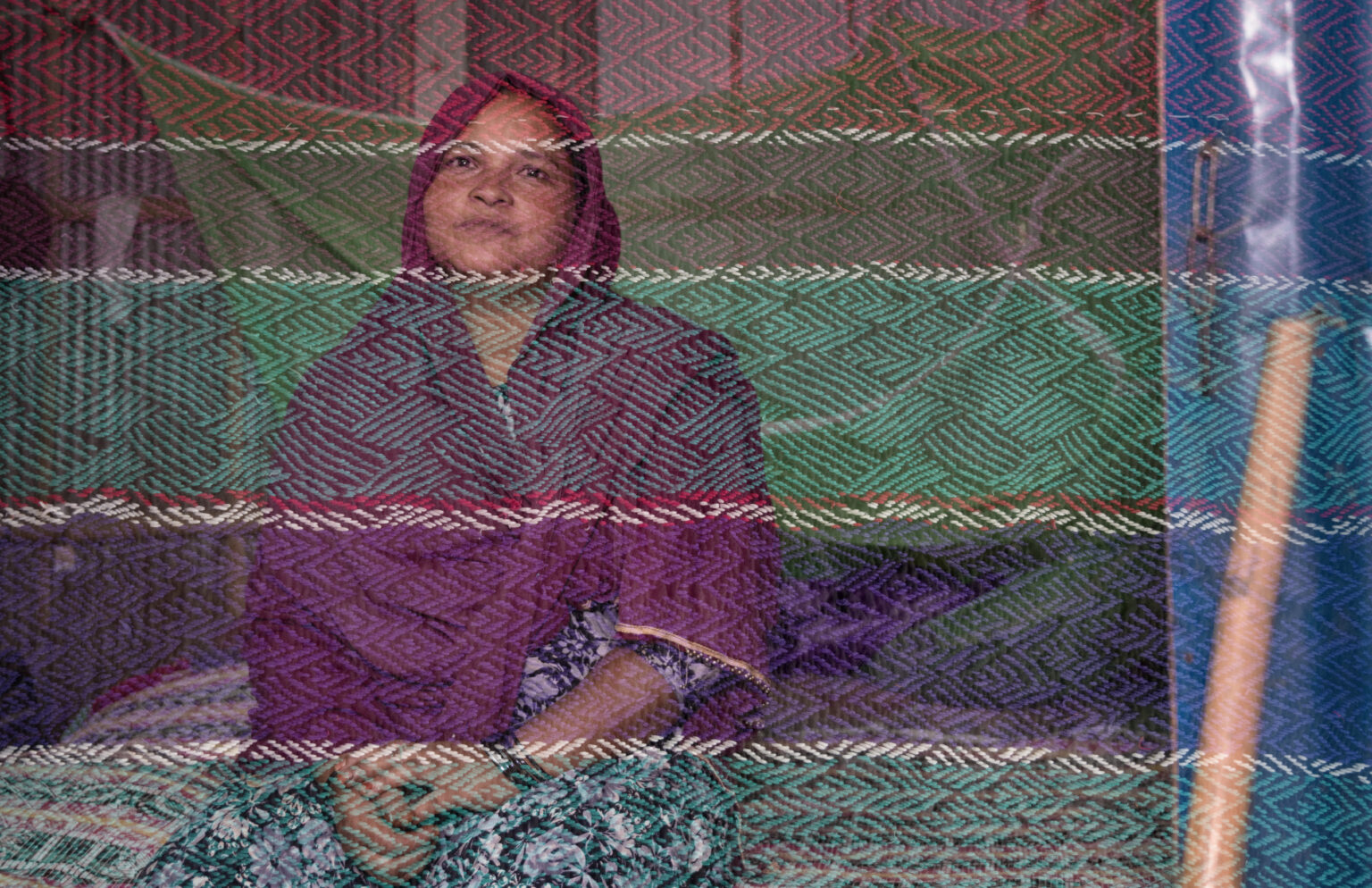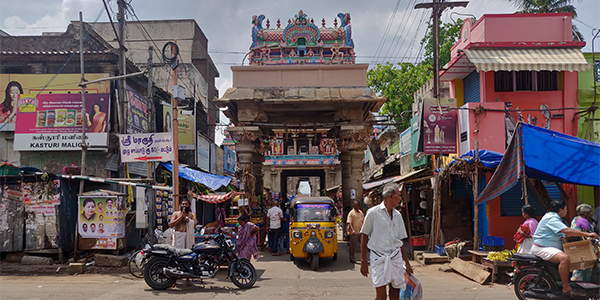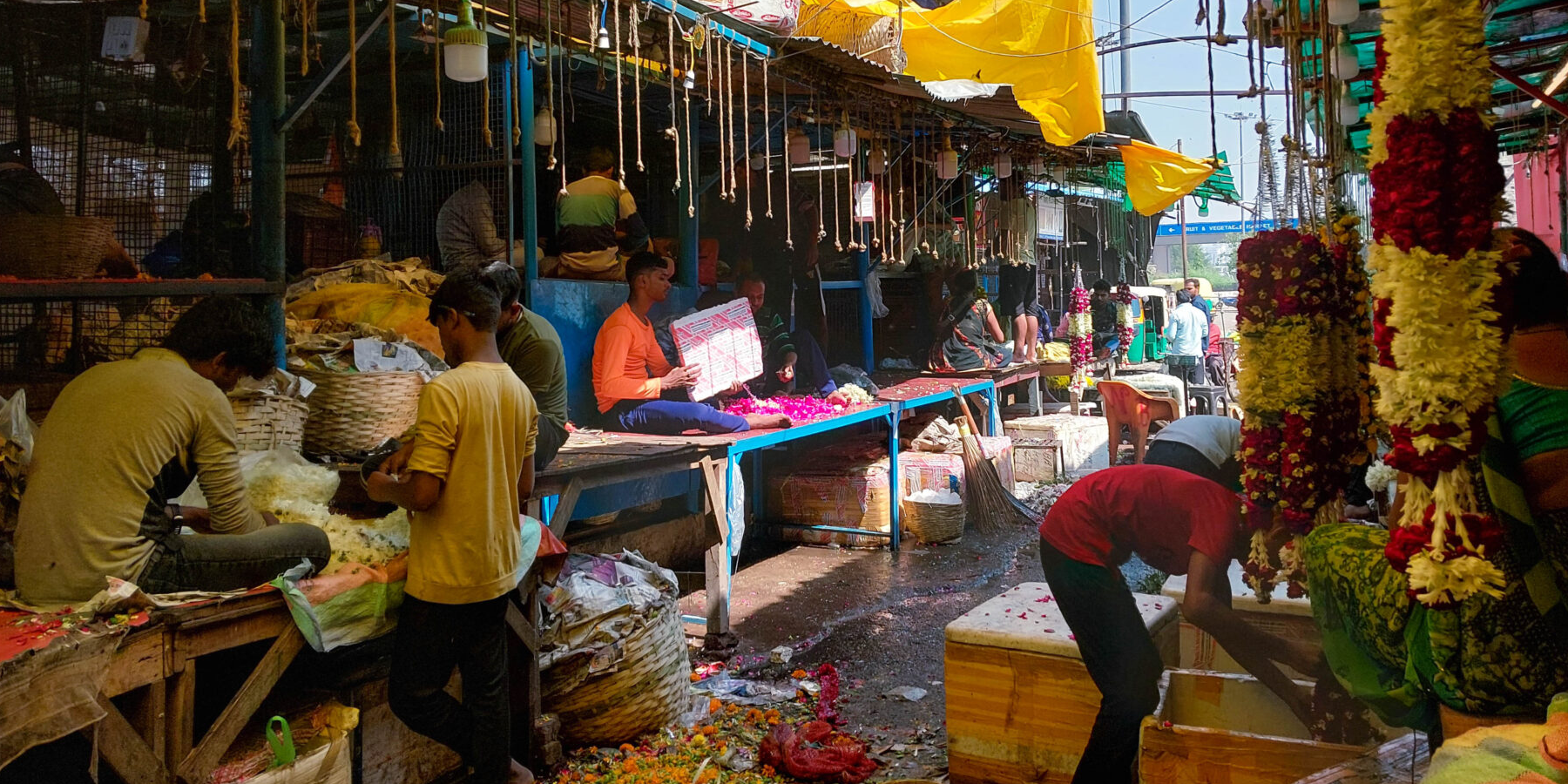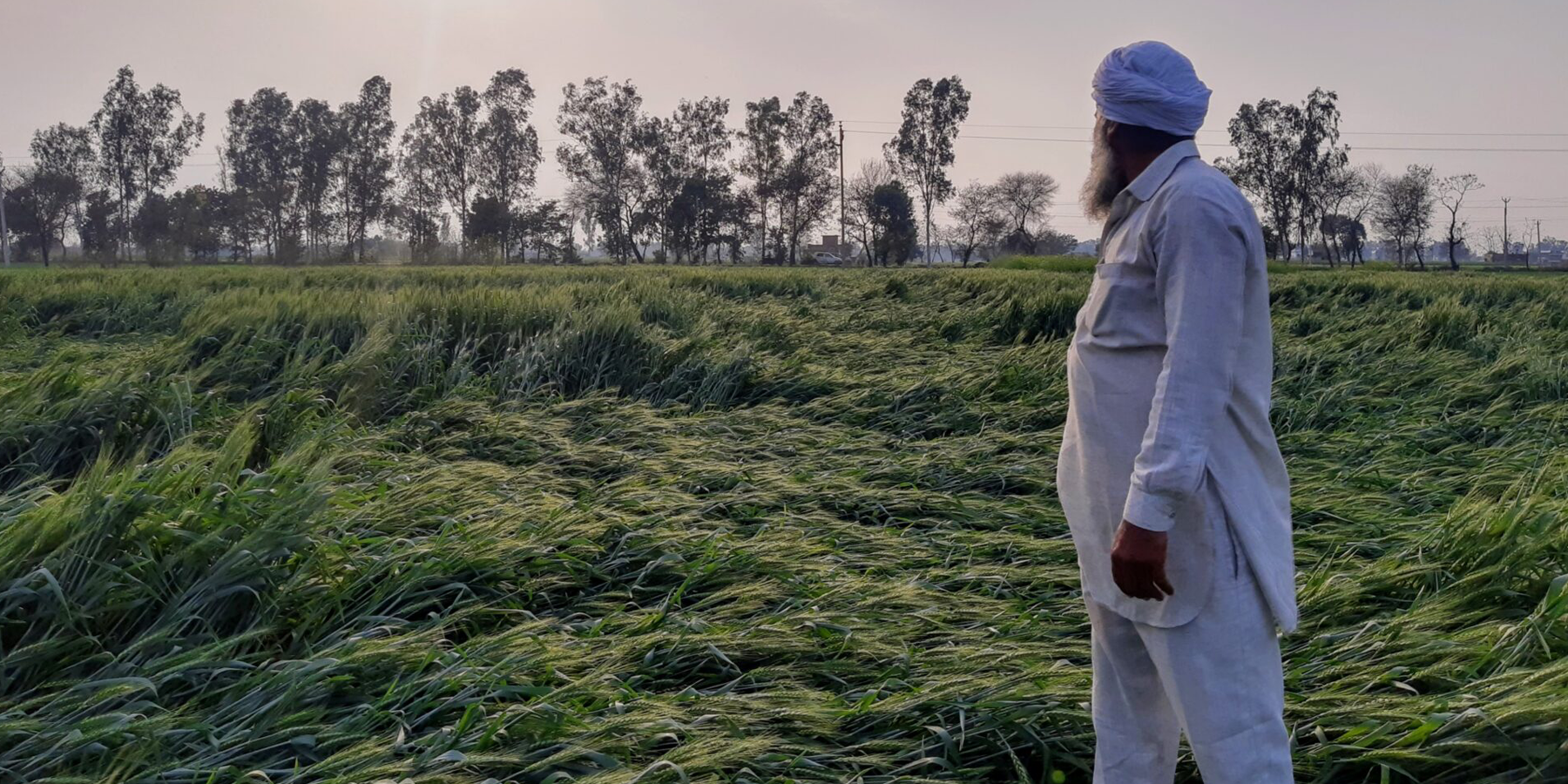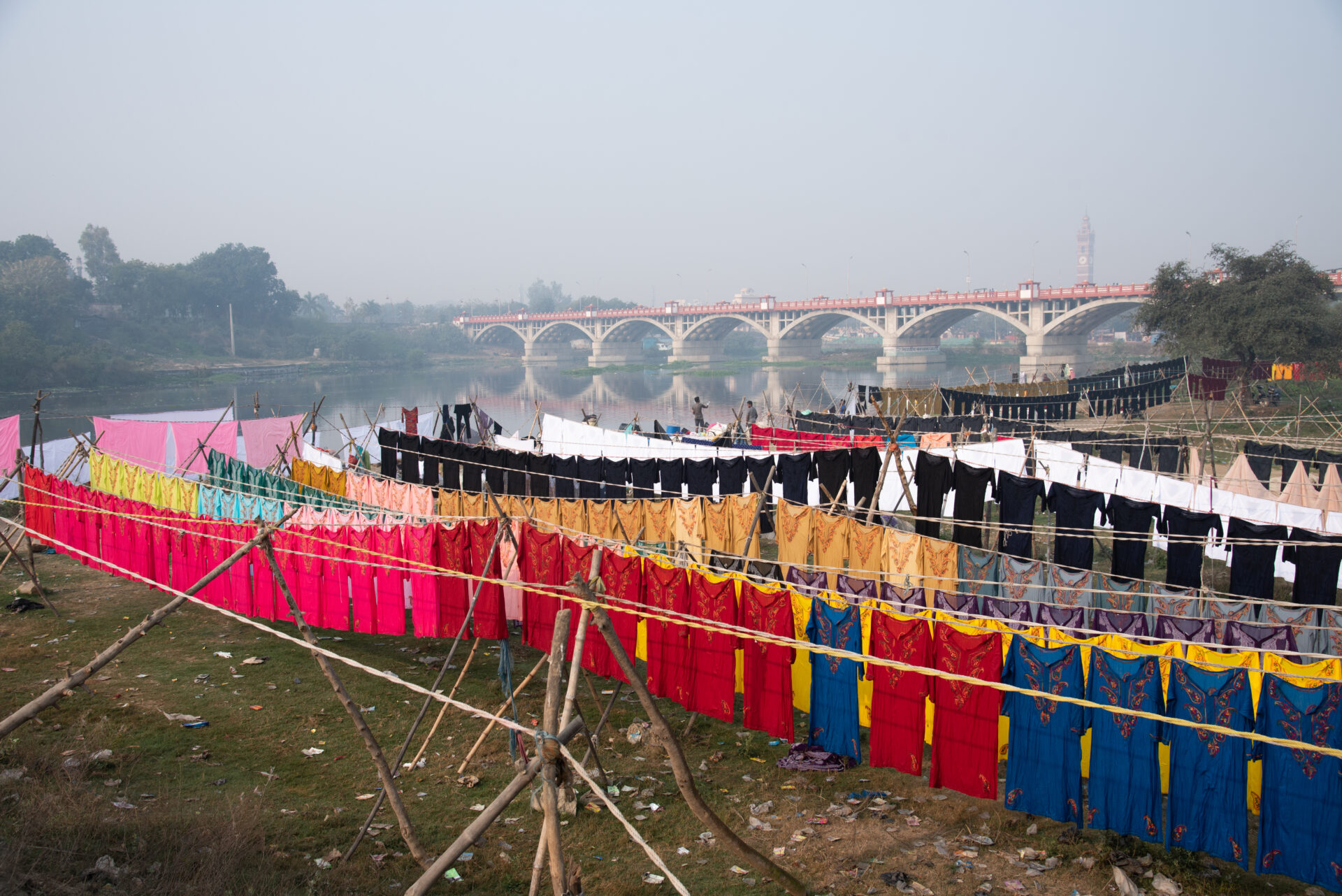
As rows of brightly coloured garments hang to dry and the sound of clothes being beaten on concrete slabs reverberates along riverbanks, Dhobi ghats in India present a unique picture. Dhobi ghats are traditional open-air laundromats built alongside riverbanks, providing livelihood primarily to the Dhobi community. The Dhobis or washerpeople, whose traditional caste-based occupation is washing clothes, live and work in these laundries. The work they undertake is labour intensive and involves hours of cleaning, drying, and ironing clothes and linens [1].
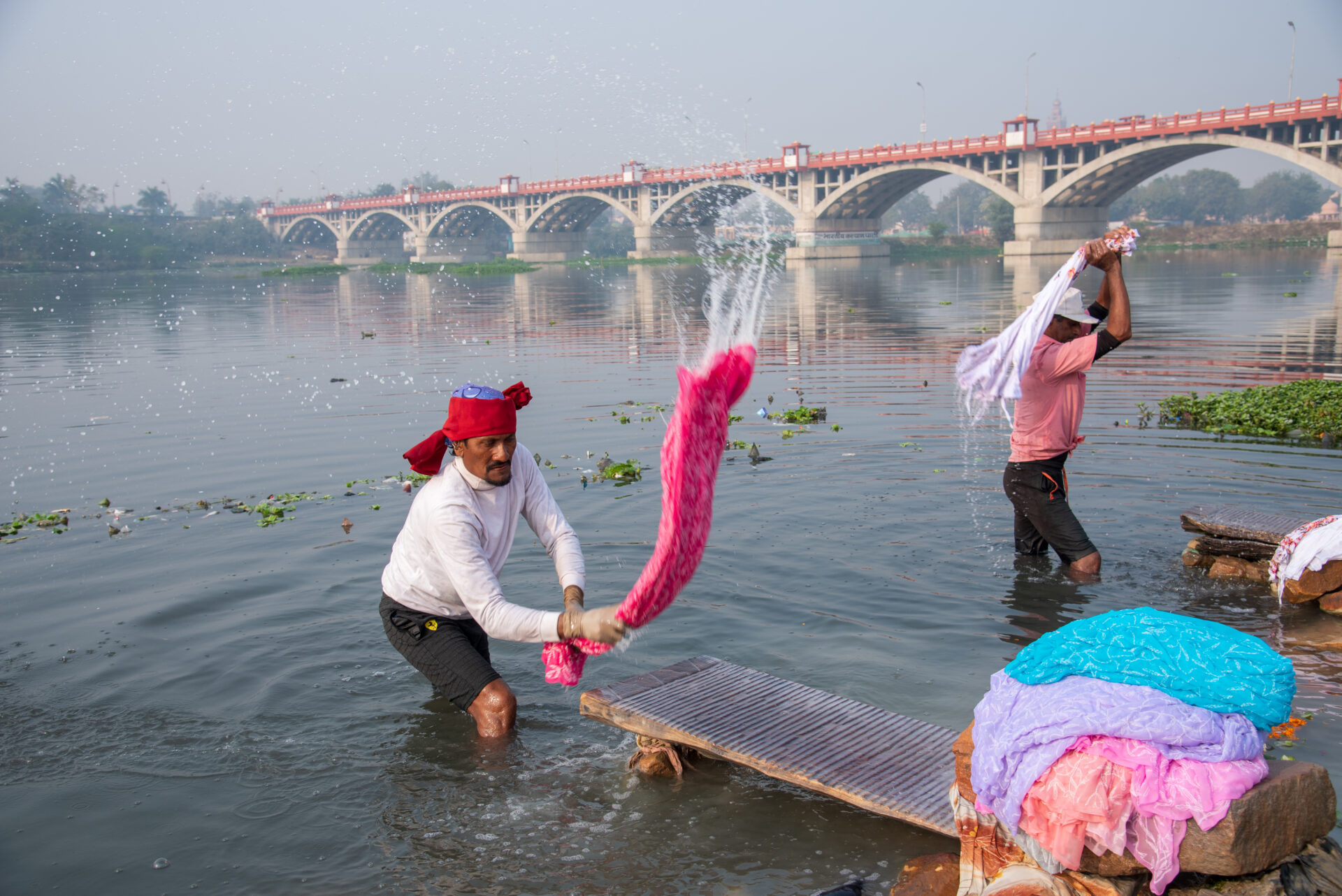
However, the arrival and adoption of new laundry technologies, along with the introduction of government schemes aimed at modernising traditional laundries, have transformed the life and work of Dhobi communities. The advent of washing machines for domestic use, mangle/wringer machines, large washers and dry cleaning machines has not only displaced the livelihood of Dhobi communities but has also propelled them to integrate these new laundry technologies at Dhobi ghats [2]. In order to mechanise laundry work, the government of India launched a unique scheme called The Dhobi Ghat Sudhar Yojna (2004). This scheme aimed to bring about sustainable development and modernise Dhobi ghats by introducing environment-friendly technologies in Delhi [3]. However, these technocratic interventions directed towards aesthetically transforming dhobi ghats have demolished the houses of small scale Dhobis and migrant workers who reside on their peripheries [4].
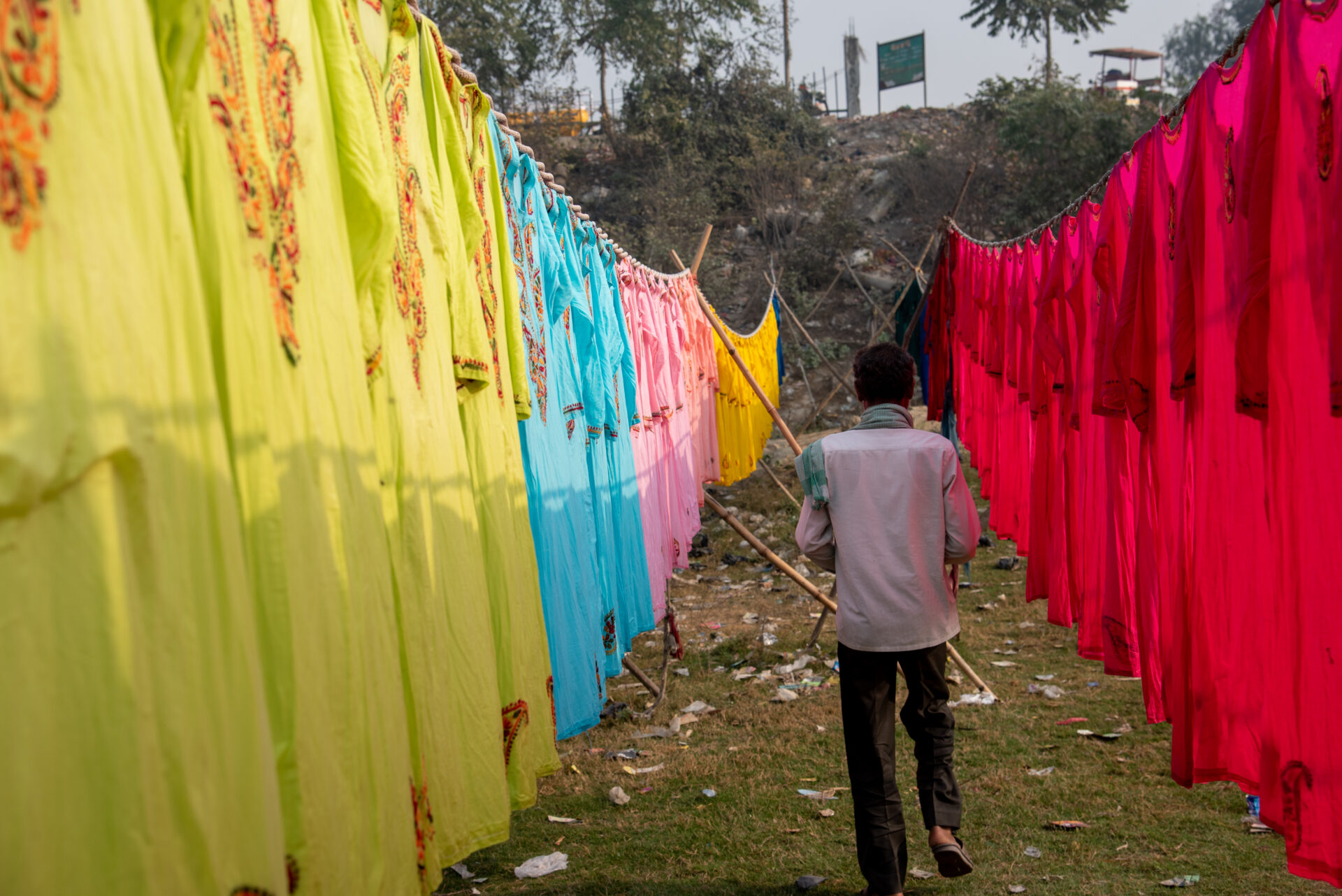
These efforts fail to consider that access to technology is often not dispersed equally among people. Washerpeople are not a homogenous category. They differ along the lines of family ties, class, the scale of work, types of clients, gender, age, etc. Often the most vulnerable of the small-scale washerpeople, with limited resources, get left behind.
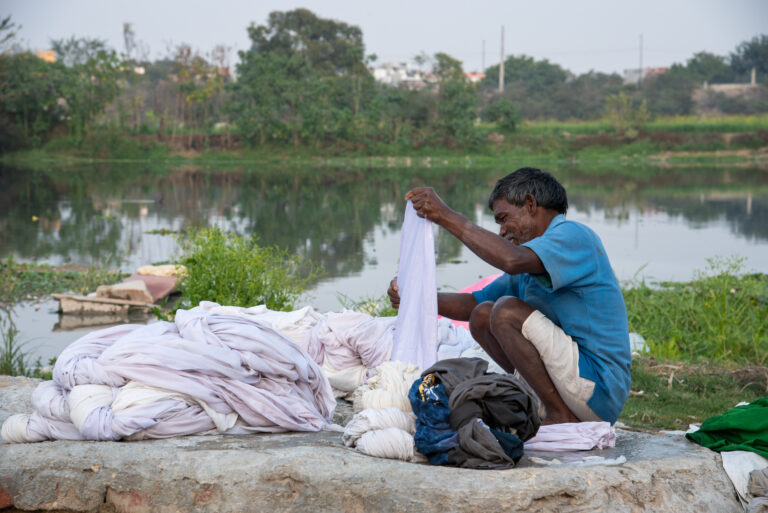
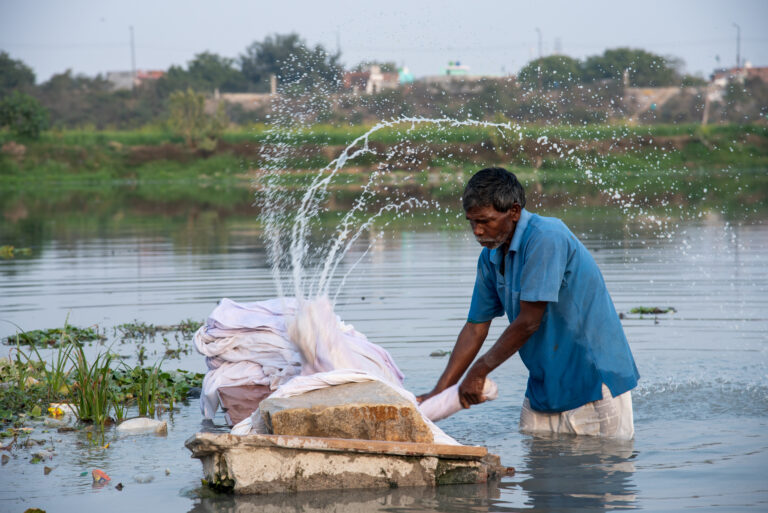
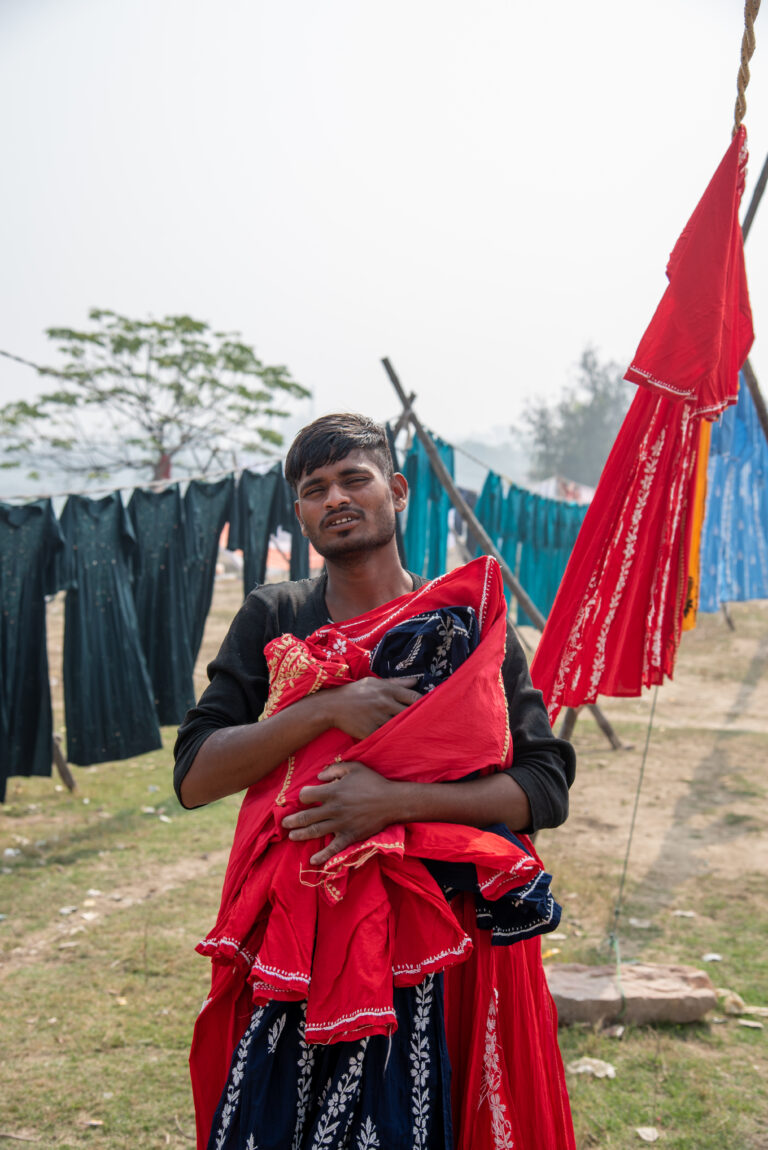
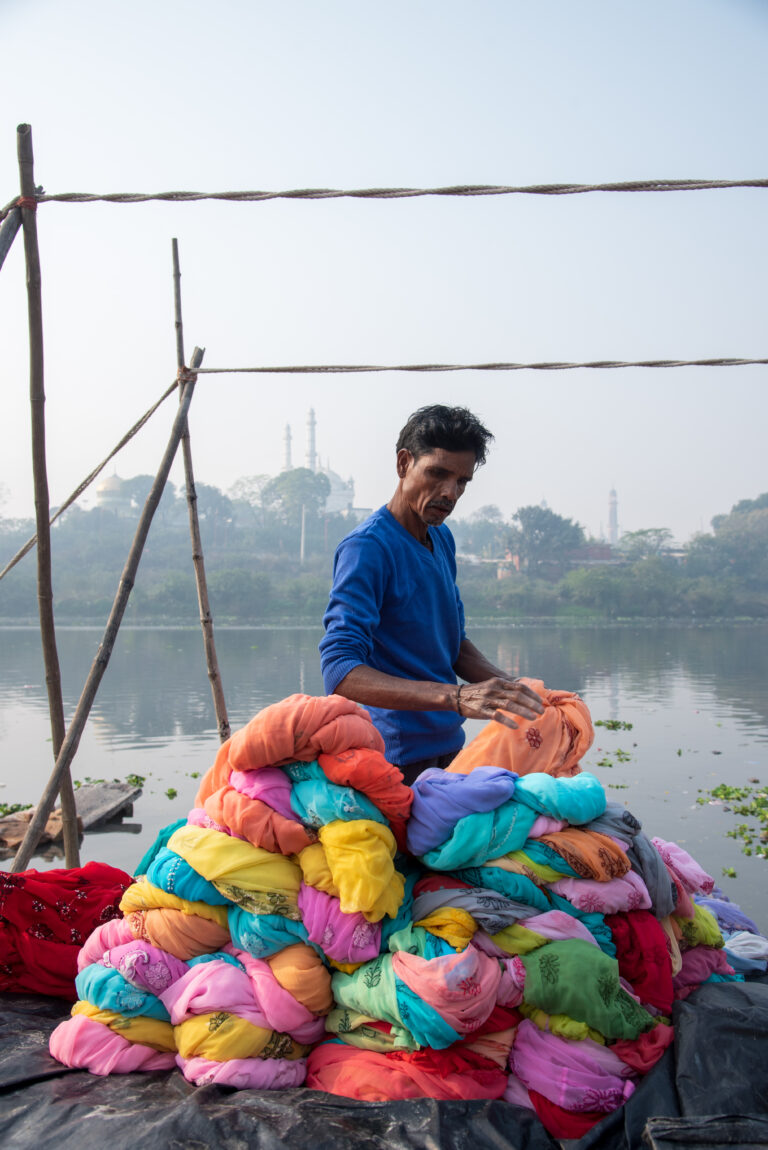
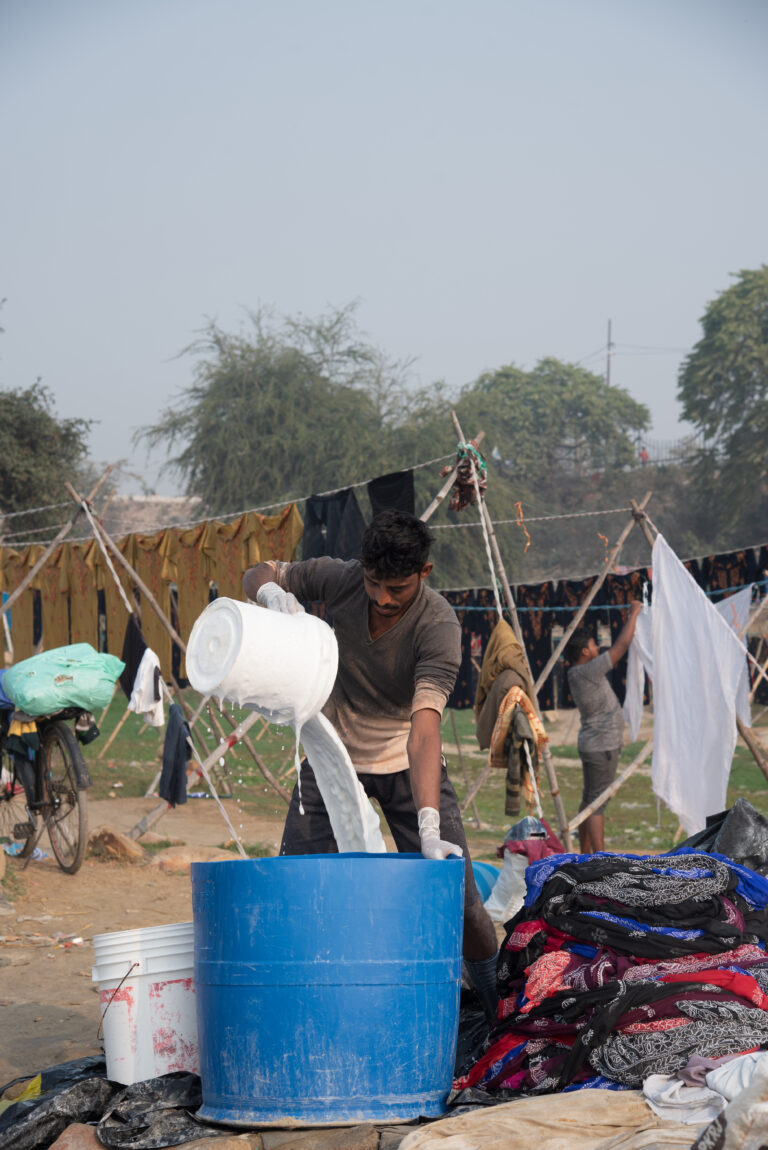
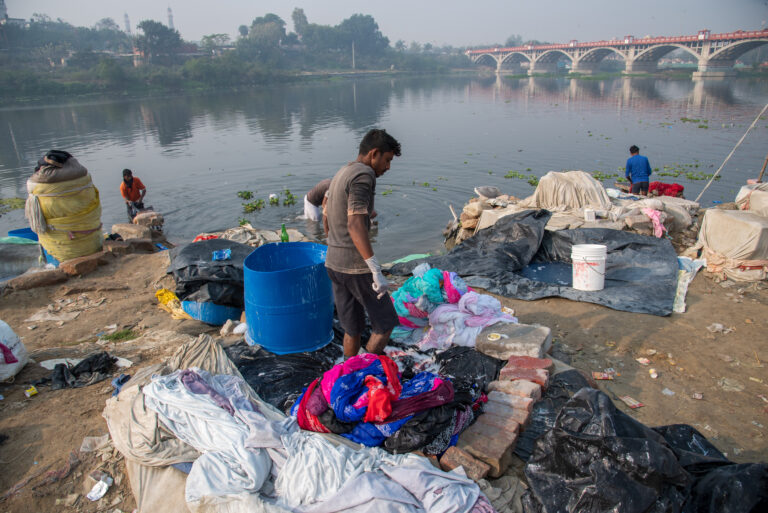
Traditionally, small-scale laundry work involved the entire Dhobi family, manually washing clothes in an area known as the washing stone or cement cubicle. In many families, Dhobi women and children were responsible for hanging clothes on the clothesline along with folding and ironing them. However, with mechanised laundry requiring less time and labour, the washing stones have become obsolete [3]. In modernised ghats, automatic washing machines, tumble dryers, and roller machines have been installed by government officials in the vicinity of large Dhobi ghats. Affluent Dhobi families with large clientele hire male workers to operate these laundry machines. Women are rarely ever hired for this job [3].
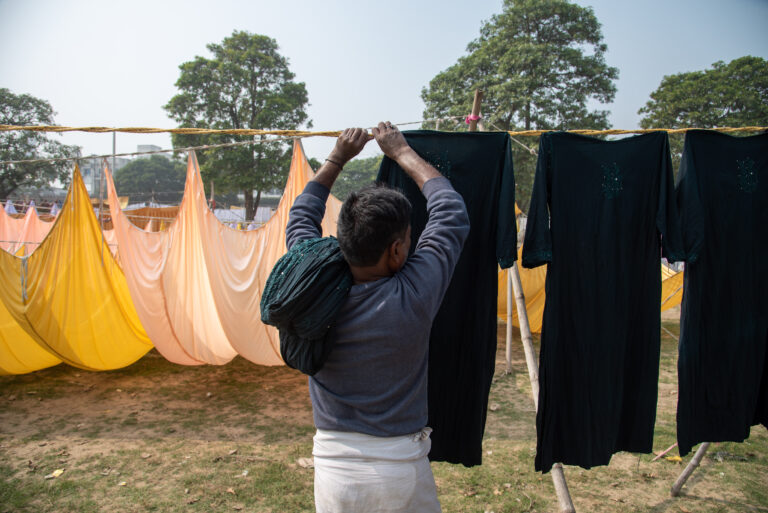
Adoption of automatic machines not only threatens the livelihoods of numerous small-scale Dhobis and migrant workers, but it also provides tough competition to the self-employed small-scale Dhobi families as they have to compete with machines in order to wash more clothes in less time [3]. Moreover, the maintenance cost of washing stones in unmodernised ghats is minimal. However, the ownership and maintenance of technological infrastructure and facilities in modern ghats, which are supposed to be shared, get monopolised by wealthy and large scale Dhobis and this excludes the most economically vulnerable people.
Furthermore, technology has altered the social fabric and spatial nature of Dhobi ghats in India. There has been a major shift in the clientele of Dhobis from stable households to commercial establishments such as hotels and hospitals. This turned Dhobi ghats into an increasingly competitive space, where families compete to work and earn profits while sharing a built environment and resources such as water [3]. Moreover, the Covid-19 pandemic worsened the disappearing laundry work since a majority of washerpeople faced uncertainty and loss of income following the partial shutdowns of various large scale hospitality and beauty industries; their main clientele [5].
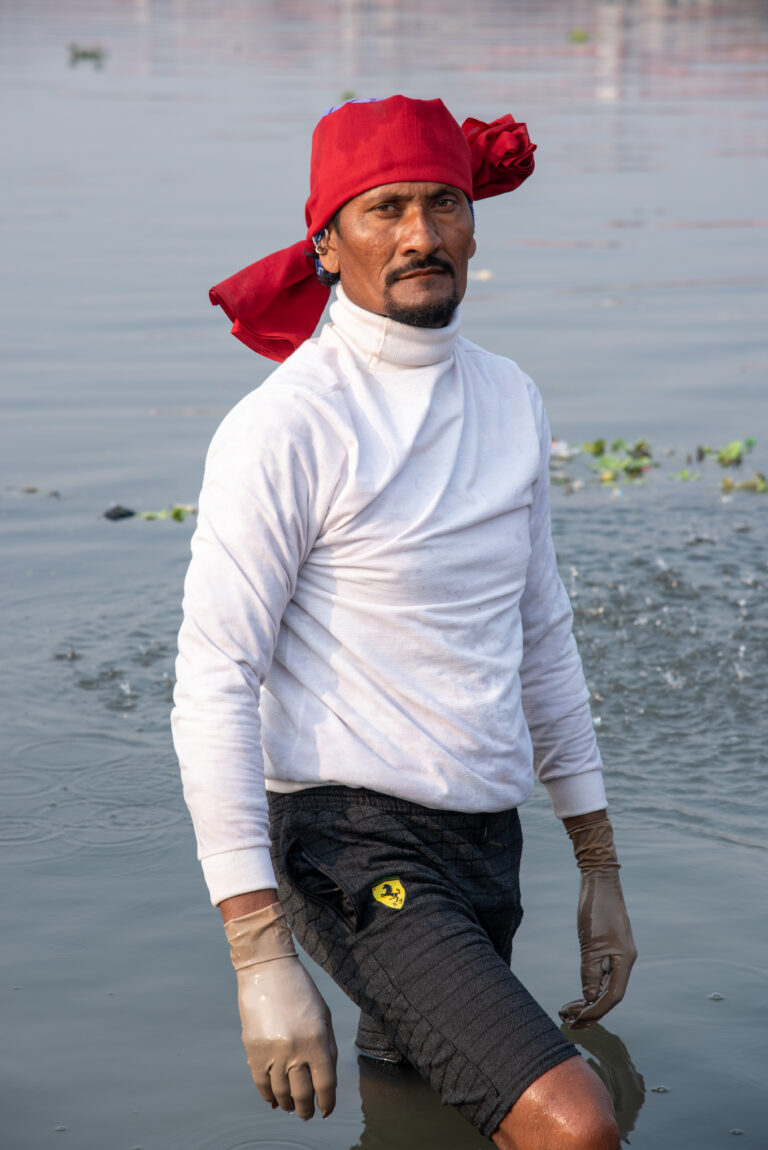
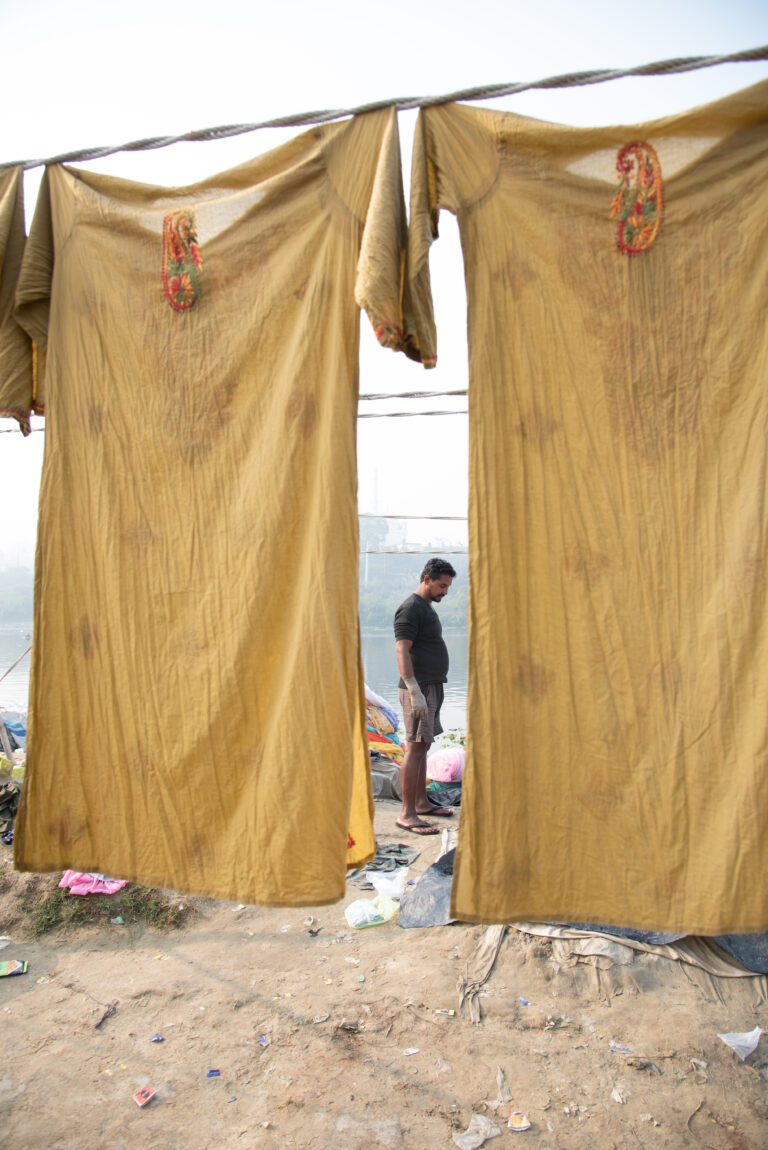
In everyday imagination, laundry holds a mundane yet inevitable presence in our lives. Ever expanding technology situates the Dhobi community at the brink of obscurity. As the communities struggle to adjust and adapt to the ever-changing technology, it’s important to remember that technology is never neutral. It is a powerful tool which alters social structures and the very texture of daily lives of people. The social implications of technology are far-reaching and affect classes and groups of people differently. The diminishing livelihoods of Dhobi communities by technology is just one such example.


